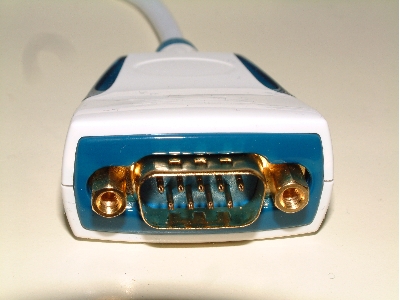|
RS232
Recommended Standard 232
RS232 serial communications, pinouts, wiring, It is a standard for serial (bit by bit) binary data signals communication between a DTE (Data Terminal Equipment) and a DCE (Data Circuit-terminating Equipment). Even today the standard remains amidst the onslaught on USB devices, it's a legacy that's not easily dispensed with, it's serial and staying here... Albeit in one guise or another. It is commonly used in todays PC's serial ports, it is defined and referred to (by techies) as asyncronous or syncronous. Asyncronous means that the communication packets of data are not sent in defined time slots. Syncronous is the opposite of Asyncronous, the data packets are sent within defined time slots. The Recommended Standard
The standard does not define such elements as;
Although the writing of the standard says that it is intended for data bit rates slower than 20,000b/s (b/s = bits per second). Devices these days support speeds of 115,200b/s and higher. Details of the character set format and transmission bit rate are controlled by the serial port hardware, often a single integrated circuit (IC) called a UART (Universal Asyncronous Receiver Transmitter) that converts data from parallel to asynchronous start-stop serial form. Details of voltage levels, slew rate, and short-circuit behavior are typically controlled by a line-driver electronic circuit that converts the UART's logic voltage levels to RS-232 compatible signal voltage levels, and a receiver that converts back from RS-232 compatible signal voltage levels to the UART's logic voltage levels.
Go from 'RS232' to 'RS232 Pinouts' page.
|
